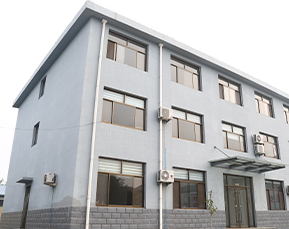 Afrikaans
Afrikaans  Albanian
Albanian  Amharic
Amharic  Arabic
Arabic  Armenian
Armenian  Azerbaijani
Azerbaijani  Basque
Basque  Belarusian
Belarusian  Bengali
Bengali  Bosnian
Bosnian  Bulgarian
Bulgarian  Catalan
Catalan  Cebuano
Cebuano  Corsican
Corsican  Croatian
Croatian  Czech
Czech  Danish
Danish  Dutch
Dutch  English
English  Esperanto
Esperanto  Estonian
Estonian  Finnish
Finnish  French
French  Frisian
Frisian  Galician
Galician  Georgian
Georgian  German
German  Greek
Greek  Gujarati
Gujarati  Haitian Creole
Haitian Creole  hausa
hausa  hawaiian
hawaiian  Hebrew
Hebrew  Hindi
Hindi  Miao
Miao  Hungarian
Hungarian  Icelandic
Icelandic  igbo
igbo  Indonesian
Indonesian  irish
irish  Italian
Italian  Japanese
Japanese  Javanese
Javanese  Kannada
Kannada  kazakh
kazakh  Khmer
Khmer  Rwandese
Rwandese  Korean
Korean  Kurdish
Kurdish  Kyrgyz
Kyrgyz  Lao
Lao  Latin
Latin  Latvian
Latvian  Lithuanian
Lithuanian  Luxembourgish
Luxembourgish  Macedonian
Macedonian  Malgashi
Malgashi  Malay
Malay  Malayalam
Malayalam  Maltese
Maltese  Maori
Maori  Marathi
Marathi  Mongolian
Mongolian  Myanmar
Myanmar  Nepali
Nepali  Norwegian
Norwegian  Norwegian
Norwegian  Occitan
Occitan  Pashto
Pashto  Persian
Persian  Polish
Polish  Portuguese
Portuguese  Punjabi
Punjabi  Romanian
Romanian  Russian
Russian  Samoan
Samoan  Scottish Gaelic
Scottish Gaelic  Serbian
Serbian  Sesotho
Sesotho  Shona
Shona  Sindhi
Sindhi  Sinhala
Sinhala  Slovak
Slovak  Slovenian
Slovenian  Somali
Somali  Spanish
Spanish  Sundanese
Sundanese  Swahili
Swahili  Swedish
Swedish  Tagalog
Tagalog  Tajik
Tajik  Tamil
Tamil  Tatar
Tatar  Telugu
Telugu  Thai
Thai  Turkish
Turkish  Turkmen
Turkmen  Ukrainian
Ukrainian  Urdu
Urdu  Uighur
Uighur  Uzbek
Uzbek  Vietnamese
Vietnamese  Welsh
Welsh  Bantu
Bantu  Yiddish
Yiddish  Yoruba
Yoruba  Zulu
Zulu Conveyor Belt Pulley Lagging Techniques for Enhanced Grip and Durability
Conveyor Belt Pulley Lagging An Essential Component for Enhanced Performance
The efficient operation of conveyor systems is crucial in various industries, including mining, manufacturing, and logistics. At the heart of these systems are pulleys, which play a vital role in the transportation of materials. However, to maximize performance and longevity, these pulleys require proper maintenance and enhancements. One effective way to achieve this is through pulley lagging.
What is Pulley Lagging?
Pulley lagging refers to the application of a protective covering on conveyor pulleys. This protective layer serves multiple purposes, including increasing the friction between the conveyor belt and the pulley, providing protection against wear and tear, and improving overall system efficiency. Lagging is generally made from materials such as rubber, polyurethane, or ceramic compounds, each selected based on the specific requirements of the application and the materials being transported.
Importance of Pulley Lagging
1. Enhanced Friction The primary function of pulley lagging is to increase the coefficient of friction between the pulley and the conveyor belt. This is crucial because insufficient friction can lead to belt slippage, resulting in material loss and decreased productivity. With adequate friction, the belt can efficiently transfer materials without slipping, ensuring a smoother operation.
2. Protection Against Wear Conveying materials, especially heavy aggregates or abrasive substances, contributes to the wear of both the belt and the pulleys. Lagging serves as a protective barrier for the pulley surface, reducing the risk of damage. Besides, when pulleys wear down, they can lead to misalignment issues, which may result in additional maintenance costs. By employing lagging, operators can significantly prolong the life of the pulley and enhance the overall durability of the conveyor system.
3. Improved Performance The benefits of pulley lagging are evident in the overall performance of conveyor systems. With better grip between the belt and the pulley, the system experiences fewer interruptions due to slippage or mechanical failure. This leads to increased productivity and efficiency, ultimately contributing to the bottom line of the operation.
conveyor belt pulley lagging

4. Vibration Reduction Another significant advantage of pulley lagging, especially with rubber lagging, is its ability to help absorb vibrations. These vibrations can be caused by various factors, including uneven load distribution or dynamic forces during operation. Properly lagged pulleys can minimize these vibrations, resulting in a smoother operation and reduced stress on the entire conveyor system.
5. Safety Improvements Enhanced traction provided by well-lagged pulleys can also lead to safety improvements. Reduced slippage means less chance of accidents related to material spillage or equipment malfunction. This creates a safer working environment for employees and minimizes the risk of costly downtime.
Choosing the Right Lagging Material
Selecting the appropriate lagging material for a conveyor pulley depends on several factors. These include the type of material being conveyed, the environmental conditions (such as humidity and temperature), and the specific requirements for friction and durability. For example, in environments where extreme wear is anticipated, the use of ceramic lagging may be beneficial due to its superior hardness. Conversely, rubber lagging may be favored in situations where some level of flexibility and cushioning is required.
Maintenance and Replacement
Regular inspection and maintenance of lagging are essential to ensure its effectiveness. Over time, lagging can wear down due to constant use, and if not monitored, this can lead to decreased performance. Operators should routinely check for signs of wear, separation, or damage and replace lagging when necessary to ensure optimal function.
Conclusion
In conclusion, pulley lagging is a critical component of conveyor belt systems that significantly enhances operational efficiency and safety. With proper selection, maintenance, and timely replacement, pulley lagging not only improves the lifespan of the equipment but also maximizes the productivity of material handling processes. As industries continue to evolve, the role of effective pulley lagging will remain indispensable, ensuring smooth and efficient operations in the world of conveyor systems. Investing in high-quality lagging solutions is a step towards maintaining a competitive edge in any material transport operation.
-
Revolutionizing Conveyor Reliability with Advanced Rubber Lagging PulleysNewsJul.22,2025
-
Powering Precision and Durability with Expert Manufacturers of Conveyor ComponentsNewsJul.22,2025
-
Optimizing Conveyor Systems with Advanced Conveyor AccessoriesNewsJul.22,2025
-
Maximize Conveyor Efficiency with Quality Conveyor Idler PulleysNewsJul.22,2025
-
Future-Proof Your Conveyor System with High-Performance Polyurethane RollerNewsJul.22,2025
-
Driving Efficiency Forward with Quality Idlers and RollersNewsJul.22,2025





























